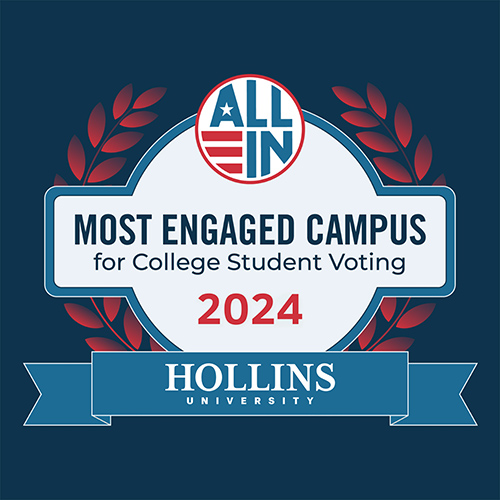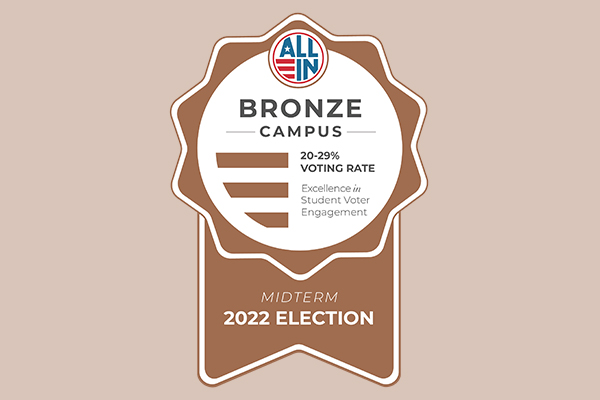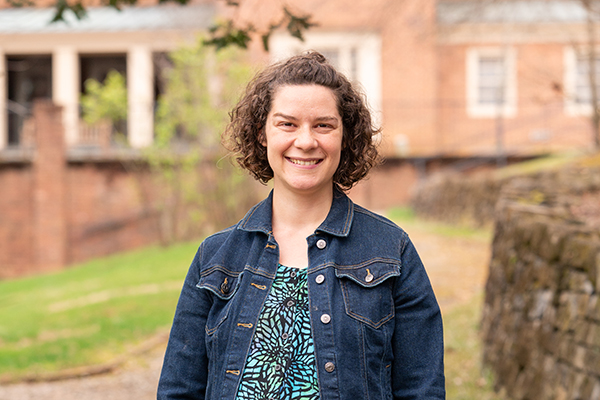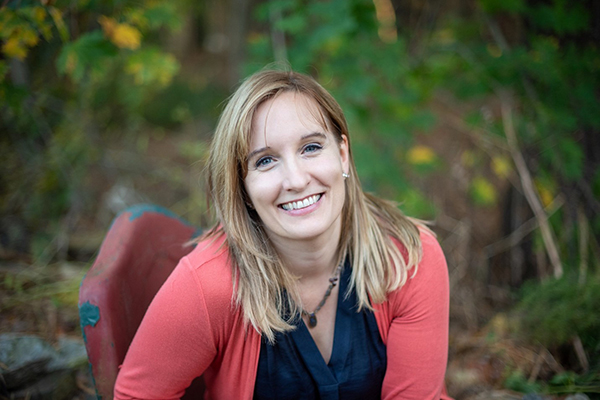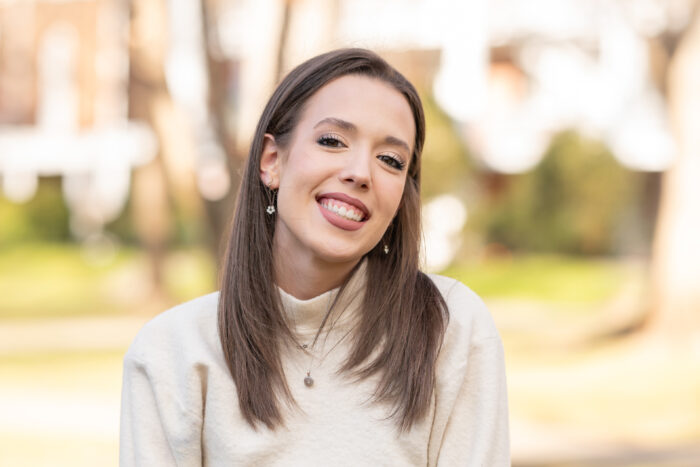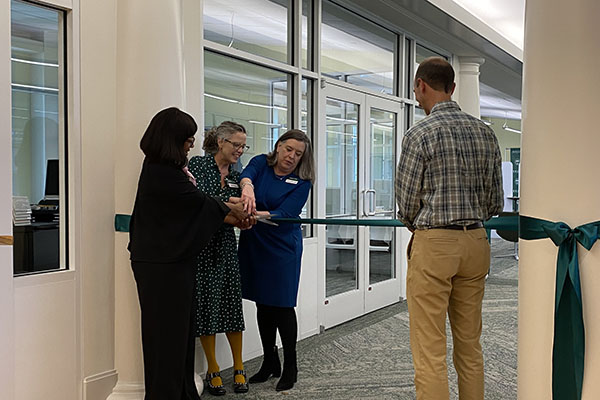Hollins is partnering with a national, nonprofit organization that focuses on protecting the emotional health of young adults to build upon the university’s existing student mental health, substance use, and suicide prevention efforts.
Through The Jed Foundation (JED), which for more than 20 years has helped colleges and universities strengthen their support networks and emotional safety nets, Hollins is participating in an initiative called JED Campus Fundamentals. The collaboration, which will take place over 18 months beginning this fall, will guide the university through the development of systems, programs, and policies that prioritize student well-being.
Ethan Fields, director of higher education program outreach and promotion at JED, noted that a “top-down, bottom-up infrastructure, informed by data collection, analysis, and utilization, and a commitment to long-term strategic planning” are the key elements for success. “We all play a part. Student well-being is linked to everybody’s roles and responsibilities, and diverse voices from different stakeholders and students need to be a part of this process.”
The mental health of students, faculty, and staff is a significant concern for higher education leaders, particularly after the impact of more than two years of the COVID-19 pandemic. According to national data sources, 41% of U.S. students who were screened for depression last year using a validated tool screened positive, while 34% of students who were screened for anxiety were positive. “We know that other well-being metrics such as basic needs insecurities, which can include struggles with housing, food, or finances, can also affect one’s mental health,” Fields said. “In addition, students are coming to us with lived experiences of trauma, having experienced discrimination based on their identities.”
In conjunction with experts from the fields of adolescent psychology, suicidology, and public health, JED worked with the National Suicide Prevention Resource Center to produce a comprehensive strategy for promoting mental health and lowering suicide risk, based on a model developed by the U.S. Air Force. “Everything Hollins is going to go through over the next 18 months as a JED campus relates back to that approach,” Fields explained. “It starts with helping the campus really look at and evaluate how it can infuse natural, therapeutic life skills development throughout the student experience.”
Together, Fields said, Hollins and JED will consider an array of factors specific to the university, including social connectedness (“Isolation and loneliness are two major risk factors for suicide, and we want to look at how students are connecting with each other as well as with faculty and staff.”); identifying students early on before a crisis occurs (“Helping students understand that it’s okay not to be okay, but there is help all around them on this campus.”); evaluating current services on campus and in the community related to mental and physical health and substance use (“How do we work together as a shared community of care to meet students’ needs?”); and crisis management (“Ensuring that student know where they can get help if they are in an emergency.”).
Fields stressed that equitable implementation is crucial to creating an effective strategic plan. “It’s not a one-size-fits-all approach. You have to recognize that certain populations of students face systemic and structural inequities even accessing mental health services. We’re going to look at all the different populations of Hollins students, understand their unique experiences, and determine how we can center and serve them, especially students of color and LGBTQ+ students, in the strategic planning process.”
This fall, under the leadership of Vice President for Student Success, Well-being, and Belonging Nakeshia Williams, Hollins will form a mental health and well-being team that will spend five months in a thorough assessment of the resources that are currently in place, both on and off campus. In addition to Williams, the team will include the following members:
Darla Schumm (co-lead), associate provost
Sheyonn Baker, executive assistant to the president; secretary, Hollins University Board of Trustees
Gloria Bryant, coordinator, Facilities Management
Megan Canfield, dean of students, Student Success, Well-being, and Belonging
David Carlson, chief, Campus Security
Lisa Dmochowski, director, Health and Counseling Services
Billy Faires, executive director, Marketing and Communications
Ellie Gathings, director, Housing and Residence Life
Amanda Griffin, lead counselor, Health and Counseling Services
Kaiya Jennings, chaplain and director of belonging, Student Success, Well-being, and Belonging
Cathy Koon, manager, Graduate Services
Jaiya McMillan, president, Student Government Association
Autumn Nordstrom, director, Scholarships and Financial Assistance
Zoe Thornhill, manager, Student Activities and Organizations
Jeffrey White, director, Center for Career Development and Life Design
Maliha Zaman, executive director, Institutional Effectiveness; chief data officer
Then, a tool called the Healthy Minds Study will be used to survey students to understand their lived experiences, attitudes, and beliefs related to mental health, substance use, diversity and inclusion, and other issues. “After we collect that information,” Fields said, “we will provide the task force with a report of notable strengths and considerations. That becomes the basis for a consultation visit where we meet and turn feedback and recommendations into a strategic plan with short-term, mid-term, and long-term goals. We then assist the campus with implementing that plan.”
While Hollins’ active collaboration with JED will last 18 months, the goal is to develop a strategic plan that will guide the university for four-plus years. “We set it up to become a continuous process,” Fields stated. “Toward the end of our engagement we’ll focus on sustainability. We’ll see where you started, where you are currently, and where you are going to make sure you’re set up for success.”
Fields encouraged the entire Hollins community to “think much more upstream about mental health and well-being. The ultimate goal should be lowering some of those challenges that may lead to suicide ideation. As the strategic plan comes together and the university makes changes in its policies, programs, and procedures, we want to see changes in the students’ attitudes, behaviors, and lived experiences.”




